Curious Questions: Why do ships have figureheads?
Always adorned with eyes, often female and sometimes in a compromising pose, carved figureheads were cherished by their crews. But why? Harry Pearson takes a look.


Fearsome dragons, swift swans and leaping dolphins have decorated the prows of ships since antiquity. They embodied the spirit of the vessel, kept her safe in stormy weather and guided her home through rain and fog. The same held true across Britain, but it would be the Admiralty’s decision in the early 17th century to allow the use of carved images of people, not only animals, that would see the flowering of the great age of the British naval figurehead.
In 1637, HMS Sovereign of the Seas was launched, featuring the largest and most costly figurehead in the history of the Royal Navy. A huge gilded figure of the Anglo-Saxon King Edgar mounted on a leaping horse and surrounded by vassals, it was said to have cost about £7,000 (close to £1 million today).
Although it may have appealed to gawking landlubbers, the monumental figurehead made a less favourable impression on those who commanded the ships in action. Carved from elm or oak, it was incredibly heavy and compromised the seaworthiness of the vessel to the extent that, in 1796, the Admiralty tried to abolish the figurehead altogether. However, it quickly became apparent that sailors regarded a ship without a figurehead as a lost and luckless craft and so a compromise was struck — henceforth, figureheads were carved from lighter timber, in particular yellow pine.
The size of the figurehead was conditioned by the tonnage of the ship and the sweep of the prow. Some were carved from one solid block, others from several blocks dowelled and glued together. In merchant craft, it was common to base a figurehead on a member of the owner’s family or some important contemporary, such as William Gladstone or Benjamin Disraeli.
In the Royal Navy, figures from classical literature — often, but not exclusively female — were a popular choice. As the conversation between Capts Aubrey and Babbington about the figurehead of HMS Oedipus in Patrick O’Brian’s The Surgeon’s Mate comically suggests, this often led to bafflement among the crew, whose knowledge of ancient mythology was scant.
Across Britain in the 19th century, some 250 men were employed hand-carving figureheads, some at famous, specialist companies such as James Hellyer & Sons in Portsmouth, others working individually, subsidising their income by making pub and shop signs. The advent of steel-hulled ships in the 1860s gradually saw the figurehead disappear. The last Royal Navy vessel to be fitted with one, HMS Espiegle, was commissioned in 1902.
King Billy
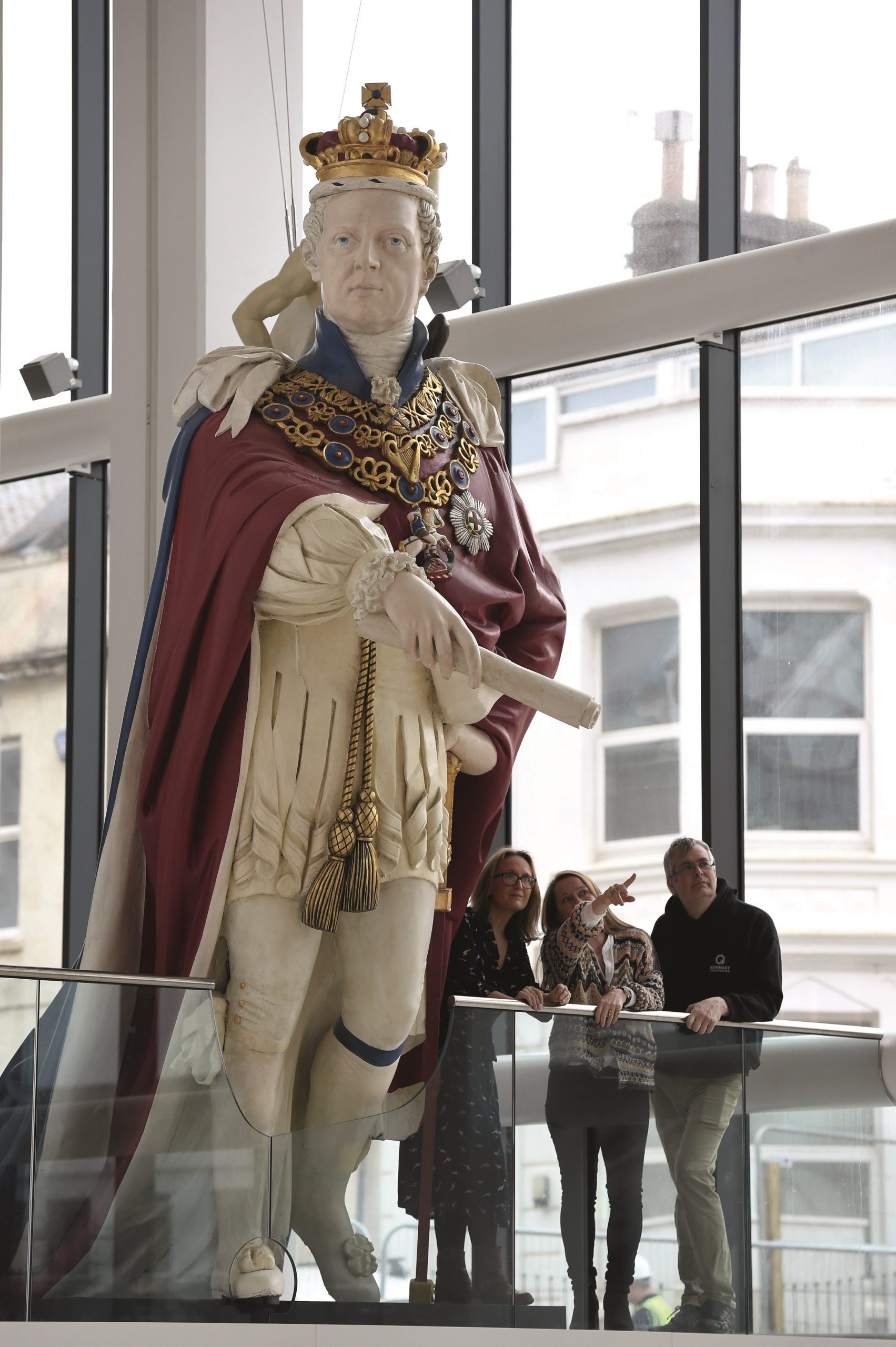
Built at Pembroke Dock in Pembrokeshire and launched in 1833, HMS Royal William was one of the largest ships ever commissioned by the Royal Navy. With a crew of 900 men, her figurehead reflected her size. Carved by Frederick Dickerson of Plymouth, ‘King Billy’, as he is affectionately known, stands almost 14ft tall and weighs about two tons. HMS Royal William saw little meaningful service and, in 1884, became a reformatory ship in Liverpool, eventually being destroyed by arson in 1899.
Exquisite houses, the beauty of Nature, and how to get the most from your life, straight to your inbox.
King Billy survived the fire and was placed at Mutton Cove in Devonport, Devon From his vantage point, he watched fleets depart and welcomed them home again, until he was replaced by a fibreglass replica and moved to The Box in Plymouth, a museum, art gallery and archive.
Arethusa
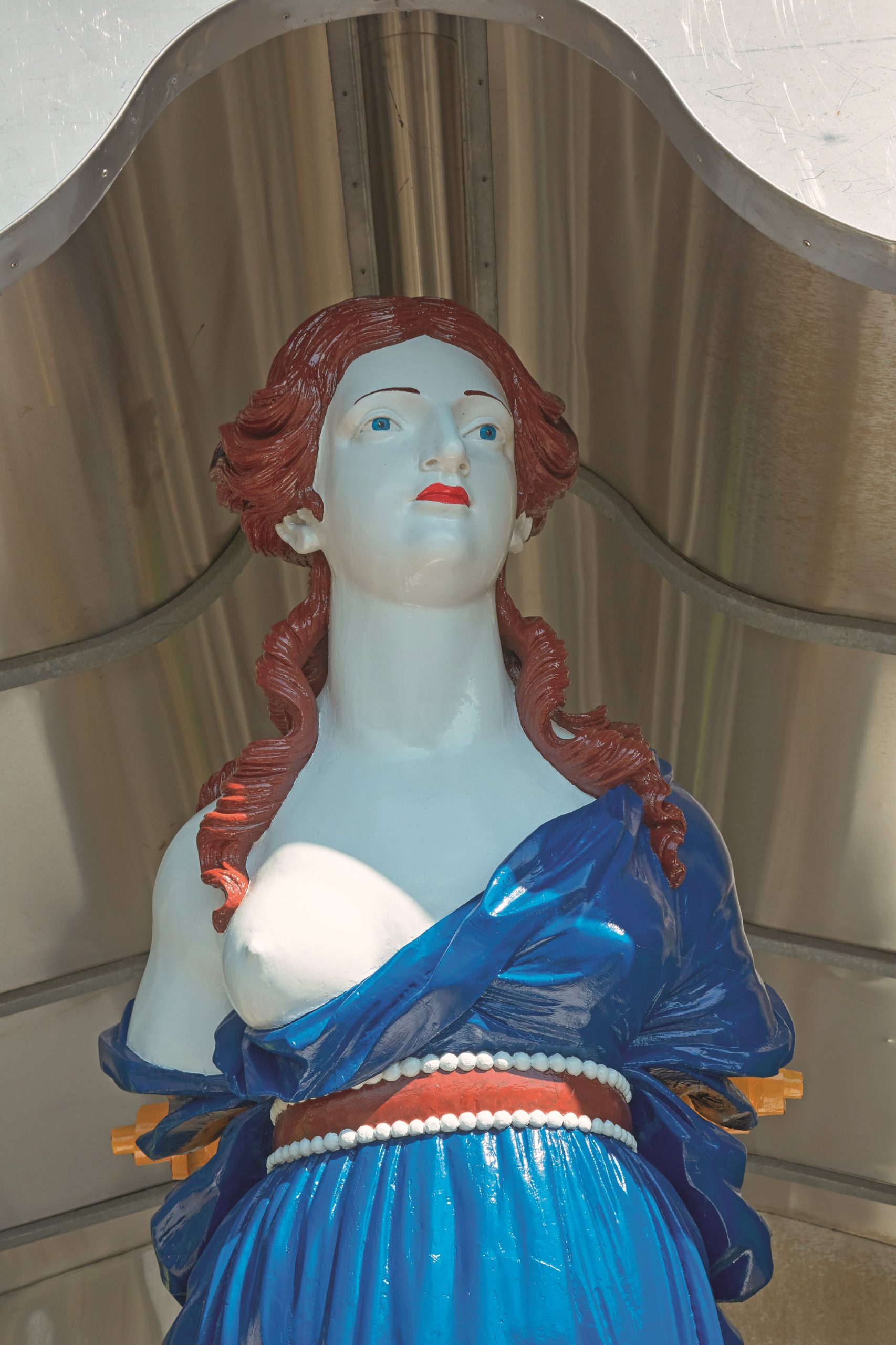
Carved by James Hellyer & Sons, this striking figure of a mythological Greek nymph with strong ties to water was the figurehead of the 50-gun Royal Navy frigate HMS Arethusa.
Launched at Pembroke Dock in 1849, she saw service in the Crimean War, becoming the last major Royal Navy ship to enter action under sail-power alone. In 1874, she was loaned to Lord Shaftesbury’s ‘ragged schools’ organisation and, moored at Greenhithe, Kent, HMS Arethusa became a training ship for destitute boys.
By 1933, her hull was rotten beyond repair and she was broken up. The glamorous Greek nymph was preserved and stands by the pier at Upnor in Kent.
The Red Lion
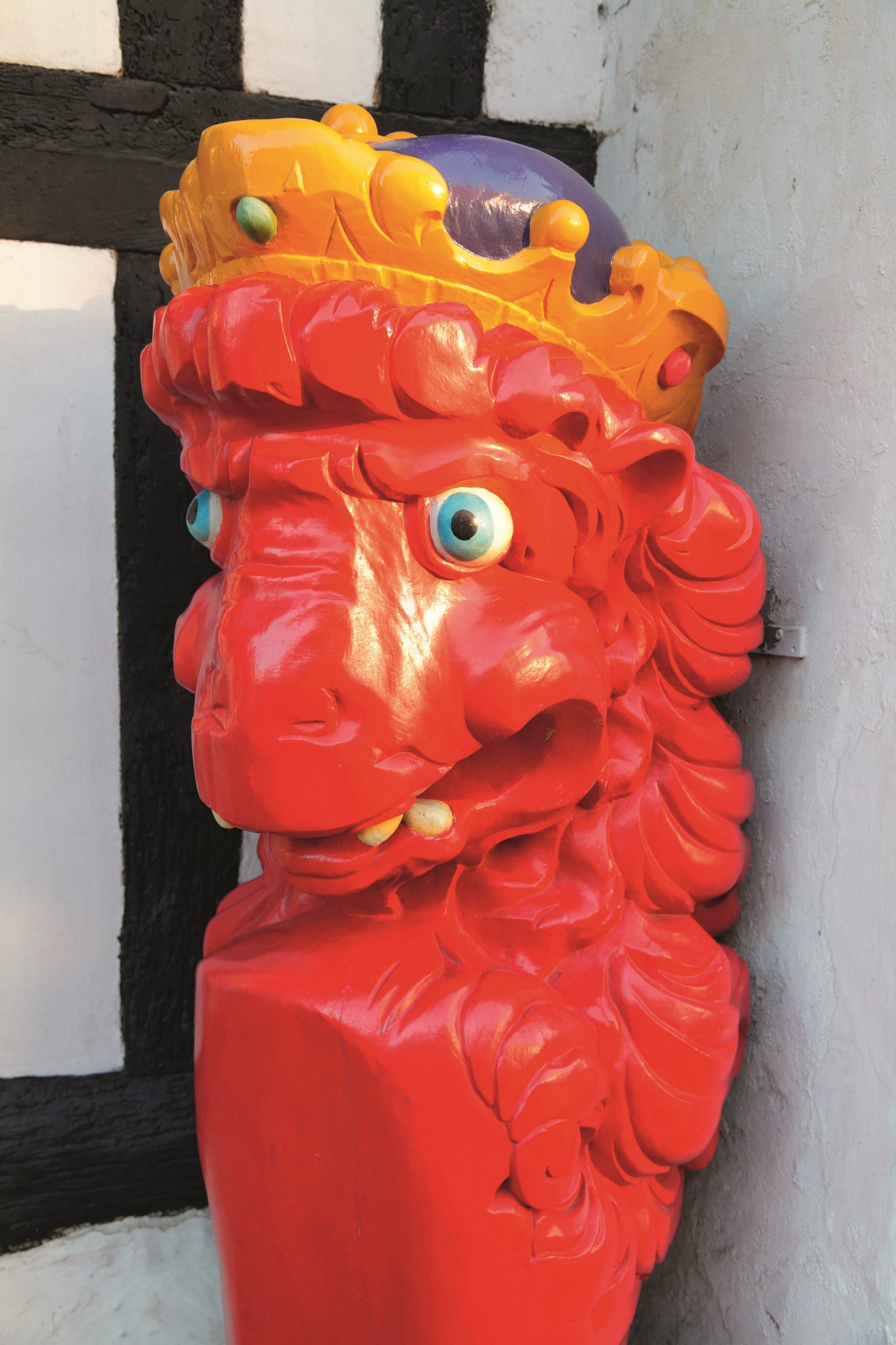
During the 17th and 18th centuries, the lion (usually wearing a golden crown) was the standard figurehead of lower-ranking Royal Navy ships. However, the most famous lion figureheads that survive in Britain today are both Dutch.
One was salvaged — local legend has it by a gang of smugglers — from the wreck of a vessel sunk in the Channel in 1690, during the Battle of Beachy Head, and was presented to the landlord of The Star Inn at Alfriston, East Sussex. The other was captured at the Battle of Sole Bay in 1672 and is now mounted on the wall of the Red Lion pub in Martlesham, Suffolk.
Billy Ruffian
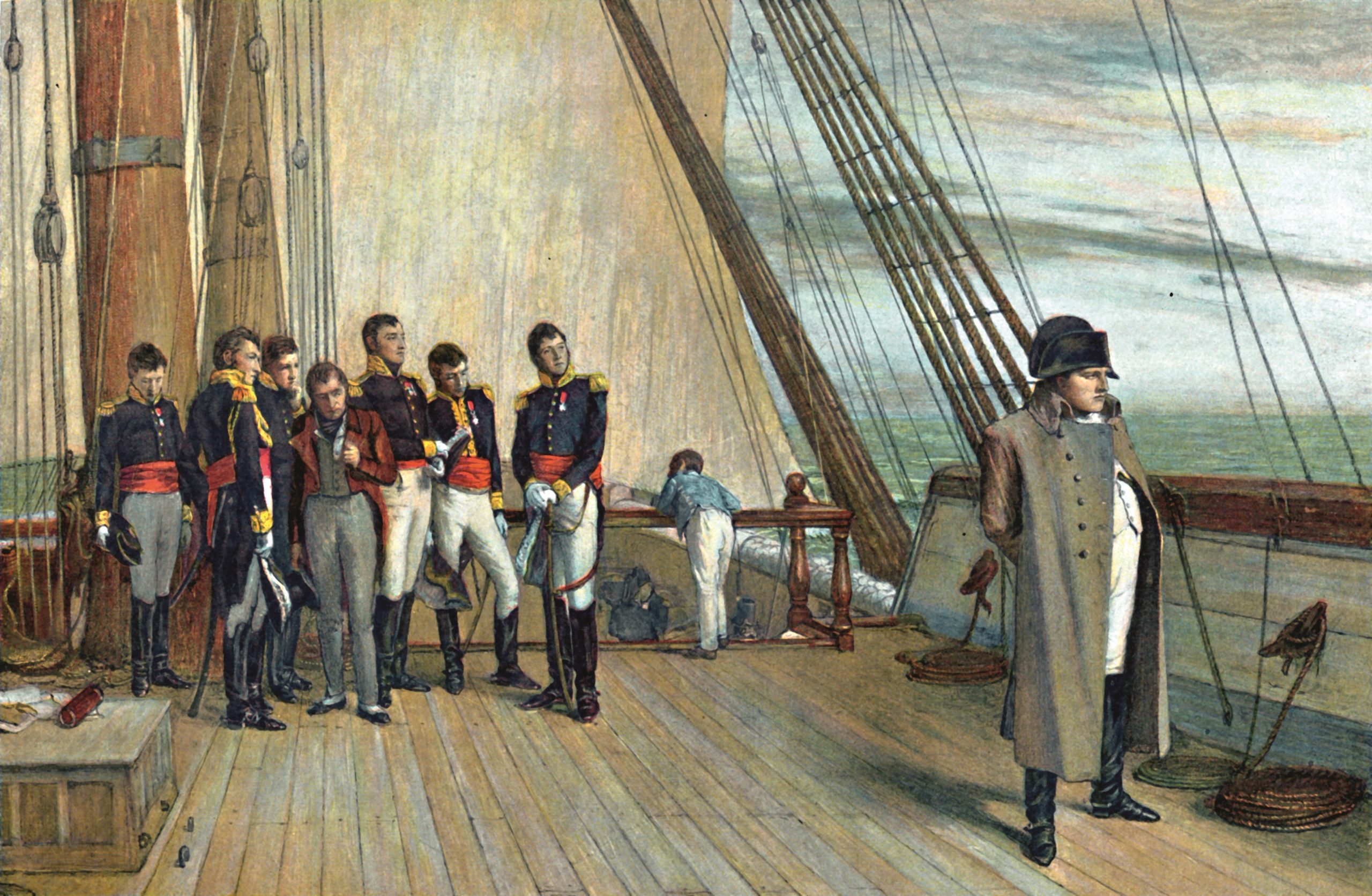
One of the most famous fighting ships of the Napoleonic Wars, HMS Bellerophon was named after the Greek hero who slayed the fire-breathing Chimera. It was a carving of this gallant warrior that formed the figurehead. Unable to pronounce his name, the sailors called him (and the ship) ‘Billy Ruffian’. Launched at Frindsbury in 1794, Bellerophon would see action at The Glorious First of June, the Battle of the Nile and Trafalgar.
It was on her deck in 1815 that Napoleon surrendered to the British. The Royal Navy was unsentimental and, when peace came to Europe, the celebrated Bellerophon was immediately turned into a prison ship and renamed Captivity.
In 1836, she was sold and broken up for timber. Only the neck and head of the gallant Billy Ruffian survived. You can see him at the National Museum of the Royal Navy, Portsmouth.

Espiegle
The steel-hulled, 10-gun sloop HMS Espiegle was the last Royal Navy ship to have a figurehead. Her name is a French corruption of Eulenspiegel, the peasant prankster of German and Dutch folklore. The female figurehead certainly conveys a frolicsome nature, with her jewel-encrusted bangles and masquerade mask. The capricious lady had a busy life, too.
She was the British observation ship at the siege of Port Arthur during the Russo-Japanese War, sank a Turkish gunboat on the River Tigris in 1914 and supported Lawrence of Arabia when he was on service in the Red Sea. Deemed unfit for modern naval warfare, HMS Espiegle was broken up in Bombay in 1923. The last of a noble line, the masked dancer can be found in the National Museum of the Royal Navy, Portsmouth.
Nannie with horsetail
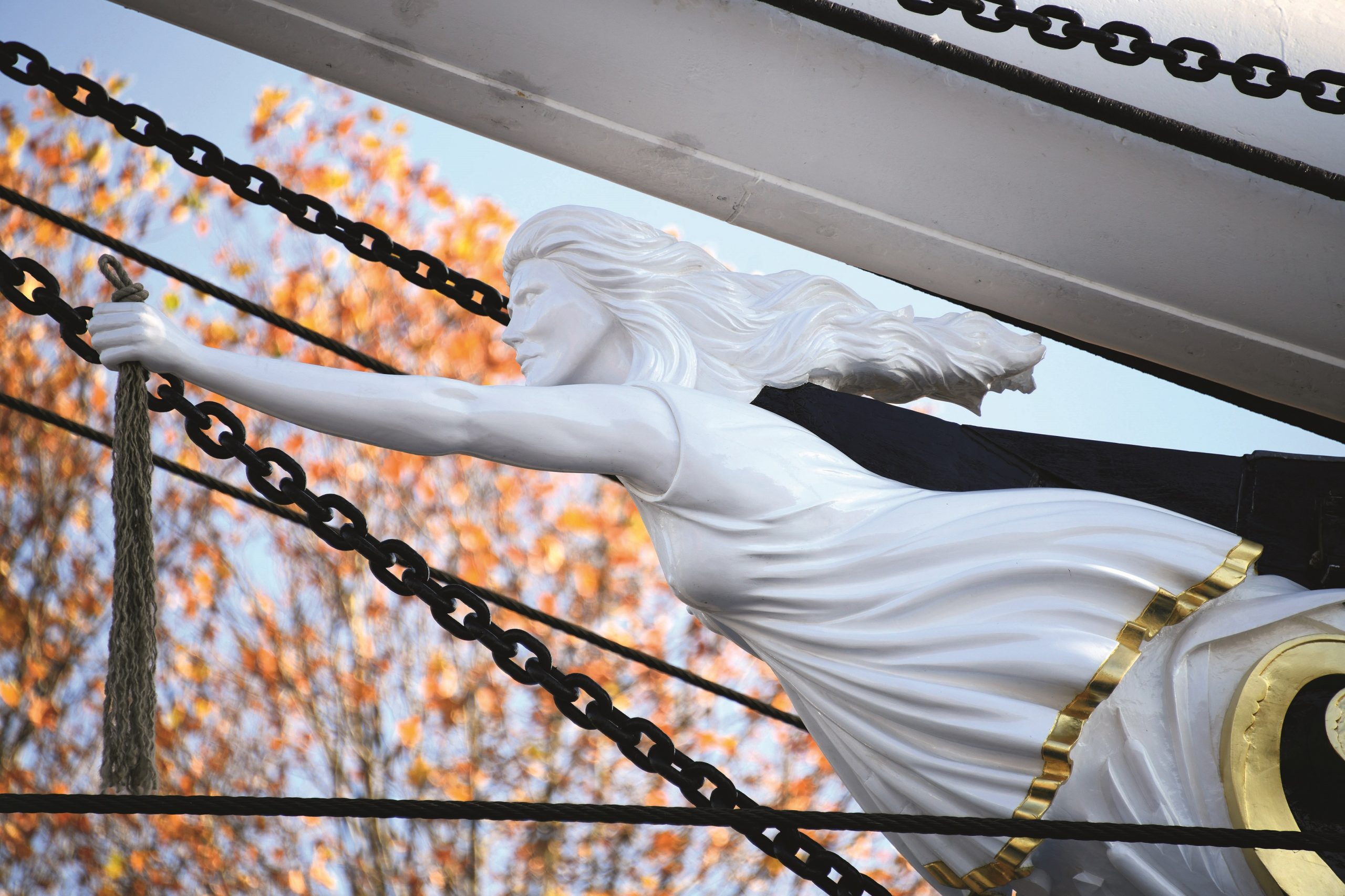
The advent of the fast-moving ‘tea clippers’ saw a revival of the art of the figurehead. None is more famous than this carving of the young and scantily-clad witch ‘Nannie’ (Cutty Sark is Scots for short nightie) as she hurtles in pursuit of Tam O’Shanter, Robert Burns’s eponymous hero. The horsetail in Nannie’s hand was torn from Tam’s faithful mare, Meg, as she and her master escaped across a river.
When the Cutty Sark was sold to a Portuguese merchant company in 1895, her name was changed to Ferreira, but the crew continued to refer to her as ‘Pequena Camisola’ — Portuguese for short nightdress. The original figurehead, the work of Joseph Hellyer, was replaced in the late 19th century. The current figurehead was carved by Andy Peters — one of the last figurehead-makers left in Britain today (Living National Treasure, March 18, 2018) — in 2021.
Terra Nova
The whaling ship SS Terra Nova was launched in Dundee in 1884. The figurehead, a kindly looking blonde clutching a rose to her bosom (a popular pose among Victorian female figureheads) experienced both toil and adventure during a long career that included hunting seals off the coast of Newfoundland and transporting coal in Australia. In between, Terra Nova helped free the National Arctic Expedition’s RSS Discovery from the ice and rescued members of the US Expedition to Franz Josef Land after their own ship had been crushed by pack ice.
In 1910, Terra Nova transported the British Antarctic Expedition of Robert Falcon Scott from Cardiff to Ross Island. Continuing in service for another three decades, Terra Nova eventually sank in the Arctic Ocean in 1942. Fortunately the comely and demure figurehead had been removed in 1913 and presented as a gift to Cardiff City Council. For many years, she stood in Roath Park, but, nowadays, you will find her in the National Museum of Wales.
Very superstitious

- Sailors believe that the presence of a woman on board a ship is bad luck. However, they also believe that naked women have the power to calm stormy seas — hence many figureheads are female and, at least before the Victorian era, usually had one or both breasts bared
- The figurehead was seen as the living embodiment of the ship, often given an affectionate nickname by the crew, who looked after it with great attention in the belief that it was responsible for bringing them home safely
- This wooden carving always has eyes, so that the vessel can see where she is going
- The figurehead was often treated as if it was a living thing. In 1778, sailors tied a hammock over the eyes of the figurehead of the HMS Royal George so it could not witness a humiliating retreat before the Franco-Spanish fleet. When the hat of the figurehead of the HMS Brunswick was shot away by French guns in 1794, the sailors demanded the captain’s tricorne to replace it, so the figurehead wouldn’t have to fight on bareheaded
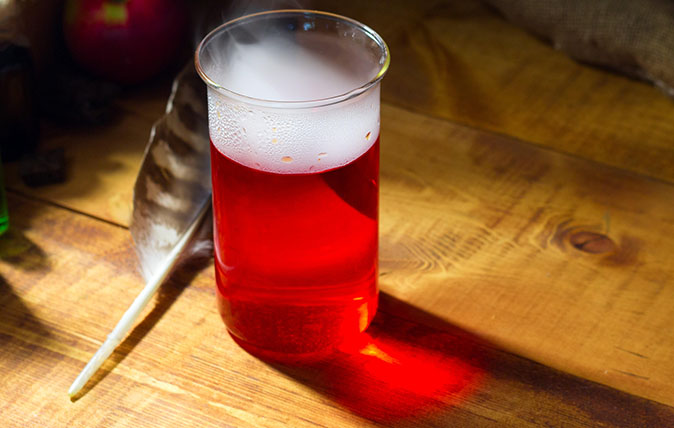
Curious Questions: Do love potions actually work?
The idea of a potion that can make someone fall in love is as old as the idea of love

Curious Questions: How fast do snowflakes travel?
Martin Fone examines the science behind snow and explores the history of snowfalls in the UK.
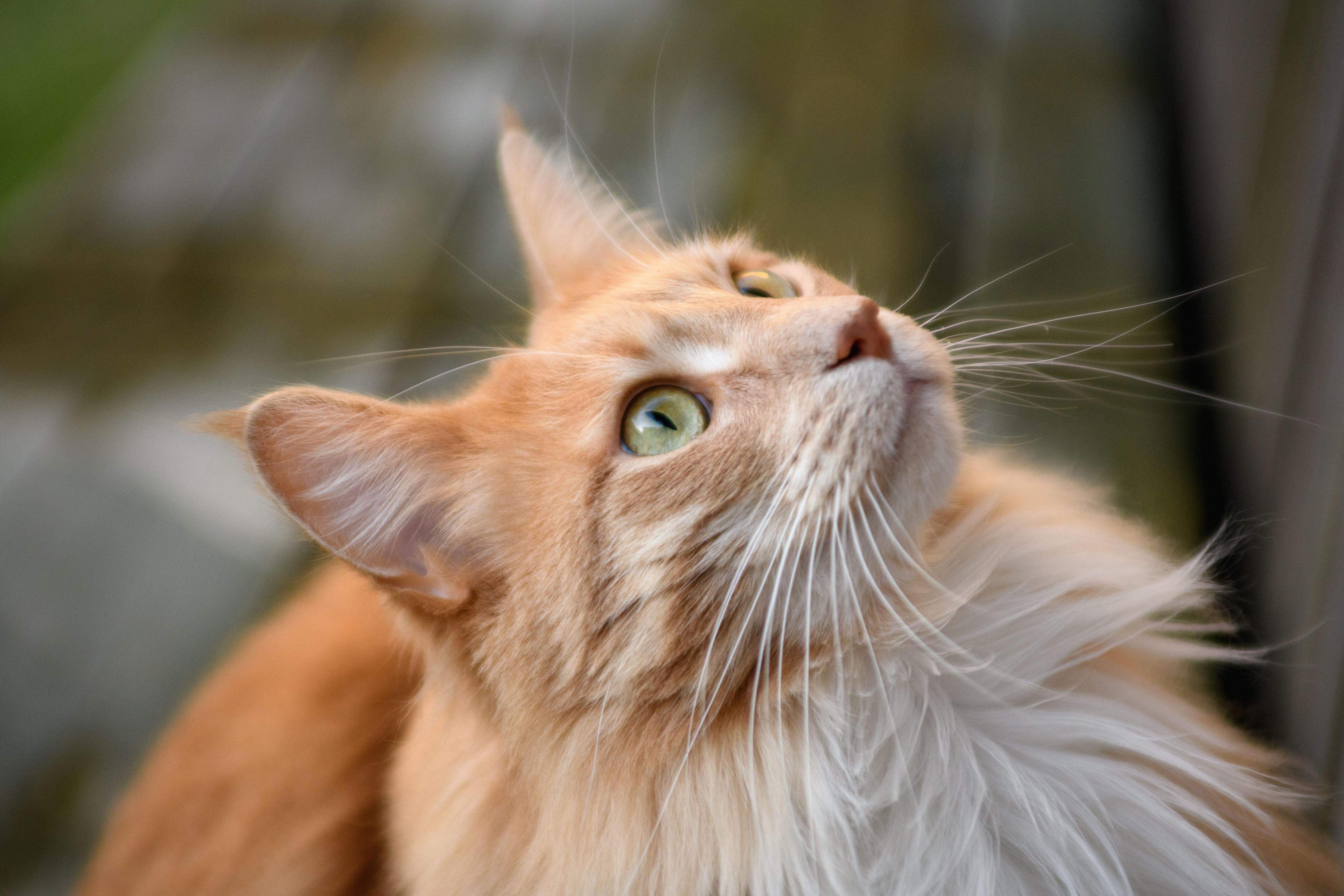
Credit: Alamy Stock Photo
Curious Questions: Why do cats have whiskers?
Martin Fone investigates the all-important role of feline whiskers—including how they contribute to enhancing the species' beauty.
Harry Pearson is a journalist and author who has twice won the MCC/Cricket Society Book of the Year Prize and has been runner-up for both the William Hill Sports Book of the Year and Thomas Cook/Daily Telegraph Travel Book of the Year.
